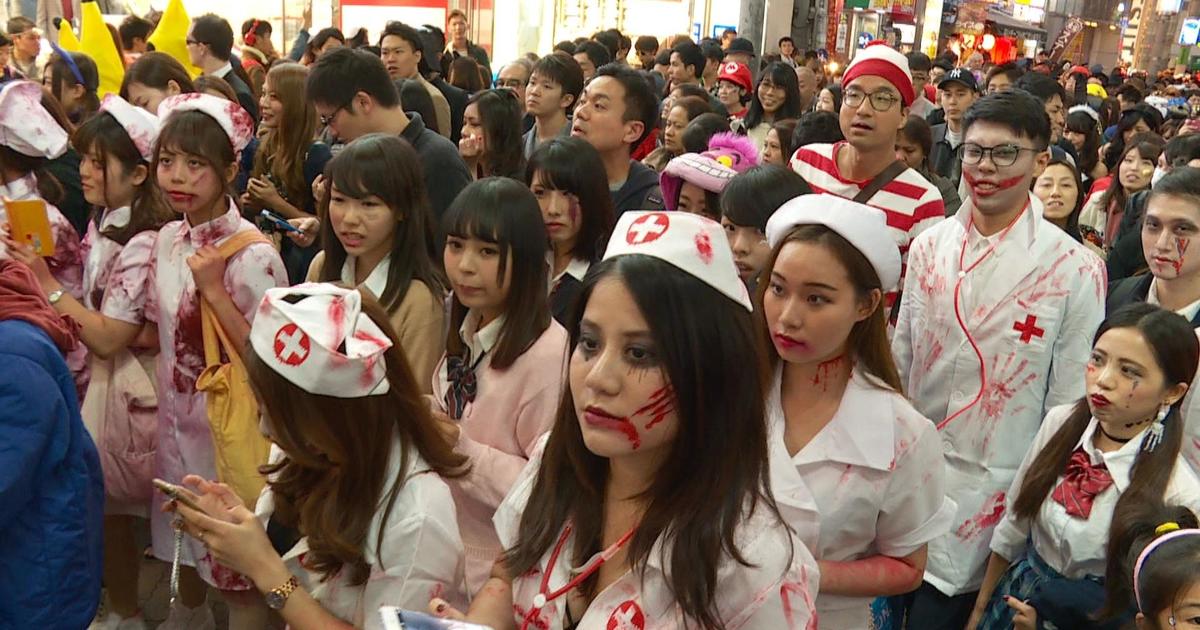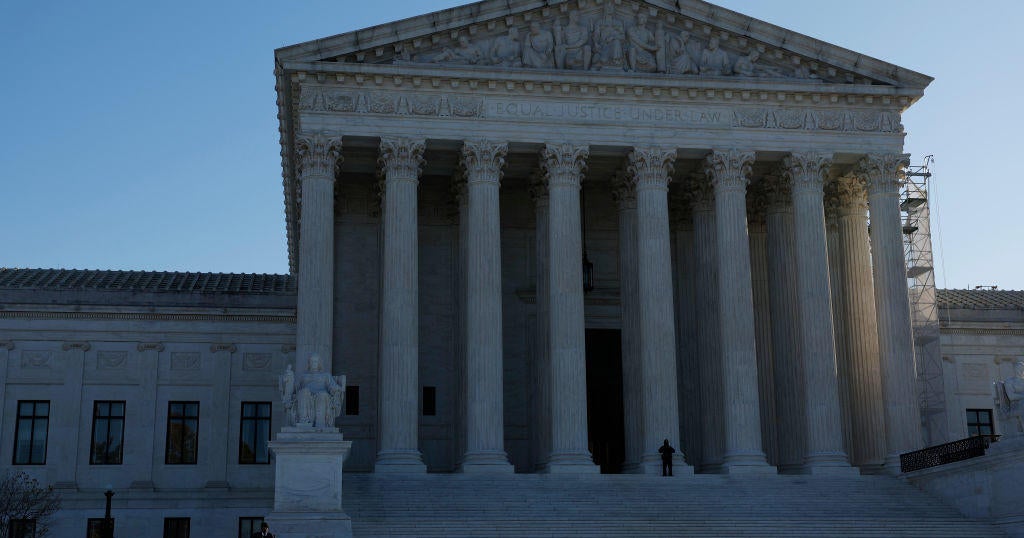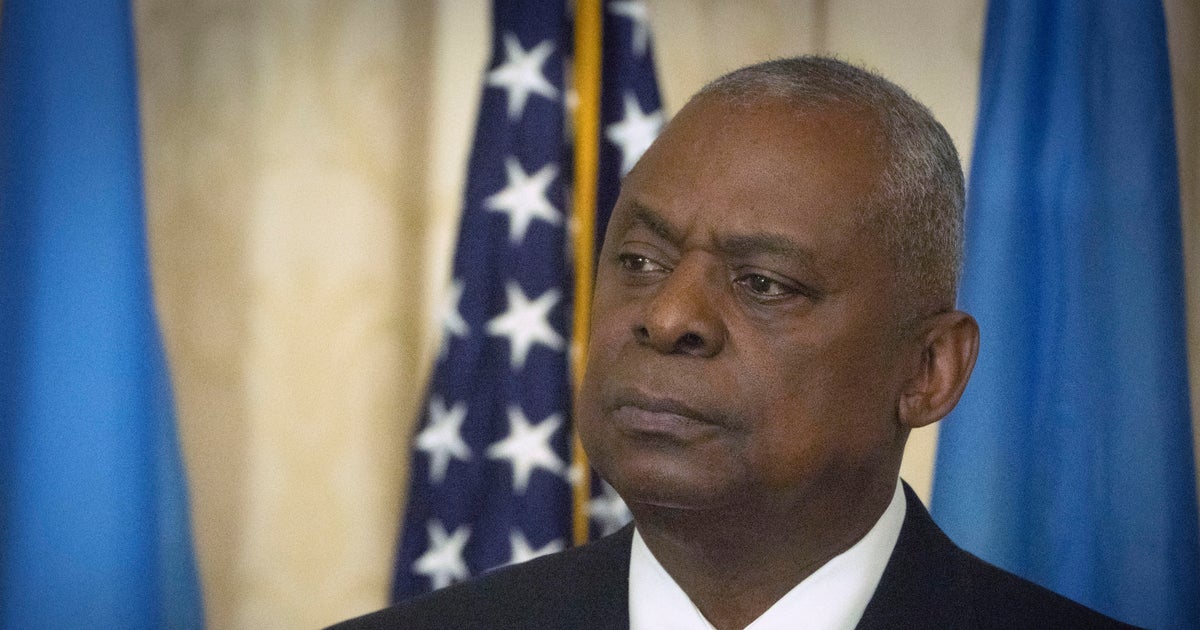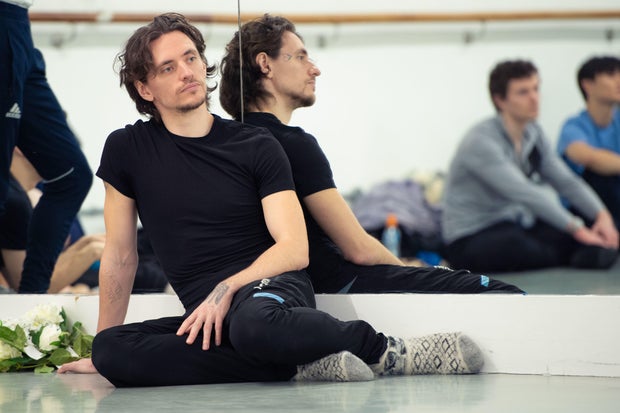CBS News
Spooked by Halloween mayhem, Tokyo’s famous Shibuya district tells revelers, “please do not come”

Tokyo – While boosting tourism is usually part of the job description for a local politician, the mayor of one Tokyo district is taking a different tack: He’s pulling up the welcome mat.
“This year we’re making it clear to the world that Shibuya is not a venue for Halloween events,” Ken Hasebe, the mayor of one of the city’s most well-known and bustling wards, told reporters this month at the Foreign Correspondents Club of Japan. “Please do not come to the Shibuya station area for Halloween.”
Shibuya ward is going to unprecedented lengths to dissuade visitors in the days leading up to October 31. In addition to the “Don’t visit” campaign, public drinking in the area will be banned starting days before Halloween, and the district’s 35 local stores will be urged to stop selling alcohol. Some 300 private security guards have been hired and 150 city officials will help patrol and enforce the no-smoking and no-drinking ordinance, in addition to scores of police.
CBS News/Randy Schmidt
A former advertising executive who later started a street-cleaning nonprofit before winning office as an independent, Hasebe described how Shibuya’s once-spontaneous, al fresco celebration of elaborate homemade costumes had degenerated into something closer to a giant outdoor frat party.
“The situation is much more serious than just over-tourism,” he said. “We’re talking about massive dumping of trash, arrests for molestation, voyeurism, property destruction.”
Most worrying to civic leaders is the prospect of crowds overwhelming Shibuya’s charming but cramped warren of bars, noodle joints and apparel shops. Absent extreme security, they warn, Shibuya is at risk for a crowd-crush disaster like the surge that killed more than 150 Halloween revelers in the South Korean capital last year.
CBS News/Randy Schmidt
While Shibuya’s pre-pandemic Halloween crowds peaked at about 40,000 in 2019, authorities have been bracing for as many as 60,000 people to show up this month, Hasebe said. As much as 70% of the crowd, he estimated, would be non-Japanese. Katsuhiro Nishinara, a Tokyo University expert on crowd surges who has been advising Shibuya ward, called preparations “perfect,” and said authorities would focus on routing pedestrians through one-way corridors on shopping streets and subway stair exits.
“There is a risk around the stations, especially subways,” he told CBS News. “If someone pushes, or they have to push in front, then a stampede easily occurs.”
Japan is a country with a population one-third the size of the United States’ — but all those people are squeezed onto a landmass roughly the size of California, so the Japanese are no strangers to deadly crowd surges. In 2001, a stampede on a pedestrian bridge in the city of Akashi left 11 people dead and hundreds injured. The tragedy spurred a rethinking of how to police organized events — but not spontaneous gatherings, like Halloween, World Cup celebrations or New Year’s Eve.
CBS News/Randy Schmidt
Shibuya’s mayor has his job cut out for him: The neon signs, giant ad screens and skyscraper-studded cityscape surrounding Shibuya train station make the district one of Japan’s biggest and most-photographed tourist draws.
Visitors patiently line up just to snap pictures in front of the famous but otherwise unremarkable Hachiko dog statue and to stroll through what may be the world’s busiest pedestrian street crossing, the Shibuya Scramble. The iconic junction’s intersecting crosswalks fill up with as many as 3,000 pairs of feet every time the light changes, and it’s even featured as a backdrop in Hollywood movies, including “The Fast and the Furious: Tokyo Drift,” and the horror film “Resident Evil: Afterlife.”
Carving pumpkins, munching candy corn and toilet-papering houses never really took off in Japan. In fact, to many observers, Japan’s version of Halloween bears a closer resemblance to the original free-spirited, come-one-come-all, ancient community harvest festival it’s based on — albeit updated by urban youth.
Attempting to explain Halloween’s explosive popularity among young Japanese, a store manager told business magazine Toyo Keizai in 2015: “In school, Japanese are thoroughly hammered into conformity. So, the pent-up desire for self-expression and transforming oneself is far more powerful here than in the West.”
CBS News/Randy Schmidt
Shibuya initially welcomed the revelers, even setting up temporary restrooms and changing rooms, but the district reversed course in recent years as the crowding escalated to potentially dangerous levels. Foreign visitors — liberated by Japan’s easy access to alcoholic beverages and the absence of open-container laws — had started getting rowdy.
Crowd-surge experts, including Hidemasa Yoshimura, a professor of architectural planning design at the Osaka Institute of Technology, are skeptical about the don’t-visit-Shibuya campaign.
“Saying ‘Don’t come here’ won’t have much impact,” he told CBS News. He advocates posting electronic signs that let pedestrians know in real time what’s ahead, similar to highway signs warning motorists about traffic jams further up the road.
Those who come to Shibuya at the end of this month will see a heavy police presence, meant to keep crowds flowing and orderly, aided by officers known as “DJ Police” stationed atop special mobile platforms, issuing a stream of gentle admonitions, occasionally in English: “Beware of pickpockets… please keep moving.”
For those who want to observe the festivities from a distance, live cameras stream the action at the Scramble crossing and the adjacent shopping and bar district, Center Gai.
CBS News
What to know about the charges in UnitedHealthcare CEO’s killing

Watch CBS News
Be the first to know
Get browser notifications for breaking news, live events, and exclusive reporting.
CBS News
Prominent pro-Putin ballet star Sergei Polunin says he’s leaving Russia

Moscow — Former Royal Ballet star Sergei Polunin, famous for his tattoos of Russian President Vladimir Putin, on Wednesday announced that he plans to leave Russia. The Ukrainian-Russian dancer was one of the most prominent stars who backed Russia’s unilateral 2014 annexation of Crimea and its military assault on Ukraine. He was rewarded with prestigious state posts.
In a rambling, misspelled message on his Instagram account, Polunin wrote: “My time in Russia ran out a long time ago, it seems at this moment that I have fulfilled my mission here.”
The post first appeared Sunday on his little-read Telegram account.
Ian Gavan/Getty
Polunin, 35, did not give a specific reason for leaving but said that “a time comes when the soul feels it is not where it should be.”
He said he was leaving with his family — his wife Yelena and three children — but “where we will go is not clear so far.”
In the summer, the dancer complained of a lack of security and said he was being followed.
Polunin, who was born in Ukraine, backed Putin’s 2014 annexation of Crimea — a prelude to the ongoing, full-scale invasion of Ukraine that Putin launched in February 2022.
The dancer was granted Russian citizenship in 2019. He was appointed acting head of a dance academy in occupied Crimea’s biggest city, Sevastopol, and director of the city’s opera and ballet theatre, for which a large new building is under construction.
Just last year he was decorated by Putin for his role in popularizing dance. But in August he was replaced as head of the dance academy by former Bolshoi prima Maria Alexandrova, and a week ago, Russia’s arts minister Olga Lyubimova announced his theater director job would go to singer Ildar Abdrazakov.
This came after on December 9 Polunin published a social media post saying he was “very sorry for people” living in the heavily bombarded village near Ukraine’s city of Kherson, where his family originates from, and that “the worst deal would be better than war.”
Ian Gavan/Getty
Aged 13, Polunin won a scholarship to train at the Royal Ballet School in London and became its youngest ever principal dancer.
With his tattoos — including a large depiction of Putin’s face emblazoned prominently on his chest — and his rebellious attitude, he became known as the “bad boy of ballet” and caused a sensation by resigning from the Royal Ballet at the height of his fame in 2012.
Later he made a 2015 hit video to Irish musician Hozier’s song “Take Me to Church” and was the star of a 2016 documentary called “Dancer.”
He moved to perform at Moscow’s Stanislavsky Musical Theatre’s ballet before launching a solo career, starring in dance performances in roles including the mystic Grigory Rasputin.
In 2019 he posed for AFP with a large tattoo of Putin on his chest which he later supplemented with two Putin faces on either shoulder. He also has a large Ukrainian trident on his right hand.
This year he took part in Putin’s campaign for reelection as a celebrity backer.
CBS News
Supreme Court takes up South Carolina’s effort to defund Planned Parenthood

Washington — The Supreme Court on Wednesday agreed to consider South Carolina health department’s effort to cut off funding from Planned Parenthood because it performs abortions, wading into another dispute over access to the procedure in the wake of its reversal of Roe v. Wade.
The case, known as Kerr v. Edwards, stems from the state’s decision in 2018 to end Planned Parenthood South Atlantic’s participation in its Medicaid program. Gov. Henry McMaster, a Republican, directed the South Carolina Department of Health and Human Services to deem abortion clinics unqualified to provide family planning services and end their Medicaid agreements.
Planned Parenthood operates two facilities in the state, one in Charleston and the other in Columbia, and provides hundreds of Medicaid patients with services like physicals, cancer and other health screenings, pregnancy testing and contraception. Federal law prohibits Medicaid from paying for abortions except in cases of rape or incest, or to save the life of the mother.
Planned Parenthood and one of its patients, Julie Edwards, sued the state, arguing that cutting off its funding violated a provision of the Medicaid Act that gives beneficiaries the right to choose their provider.
A federal district court blocked South Carolina from ending Planned Parenthood’s participation in its Medicaid program, and a U.S. appeals court upheld that decision, finding that Edwards could sue the state to enforce the Medicaid Act’s free-choice-of-provider requirement.
The legal battle has already been before the Supreme Court in the past, with the high court last year ordering additional proceedings after deciding in a separate case that nursing home residents could sue their state-owned health care facility over alleged violations of civil rights.
After reconsidering its earlier decision, the three-judge appeals court panel ruled unanimously in March that Edwards’ lawsuit against the state could go forward and said South Carolina couldn’t strip Planned Parenthood of state Medicaid funds.
“This case is, and always has been, about whether Congress conferred an individually enforceable right for Medicaid beneficiaries to freely choose their healthcare provider. Preserving access to Planned Parenthood and other providers means preserving an affordable choice and quality care for an untold number of mothers and infants in South Carolina,” Judge Harvie Wilkinson wrote for the 4th Circuit panel.
South Carolina officials asked the Supreme Court to review that decision, marking the third time the case has been before the justices. The justices agreed to take up the question of whether “the Medicaid Act’s any-qualified provider provision unambiguously confers a private right upon a Medicaid beneficiary to choose a specific provider.”
South Carolina is among the more than two dozen that have passed laws restricting access to abortion in the wake of the Supreme Court’s June 2022 decision reversing Roe v. Wade. In South Carolina, abortion is outlawed after six weeks of pregnancy with some exceptions.
Several states have also enacted laws blocking Planned Parenthood from receiving Medicaid funding, including Arkansas, Missouri, Mississippi and Texas.














GIPHY App Key not set. Please check settings